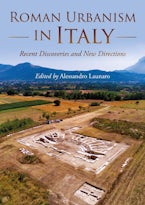The last several decades have seen a dramatic increase in interest in the Roman period on the island of Crete. Ongoing and some long-standing excavations and investigations of Roman sites and buildings, intensive archaeological survey of Roman areas, and intensive research on artefacts, history, and inscriptions of the island now provide abundant data for assessing Crete alongside other Roman provinces. New research has also meant a re-evaluation of old data in light of new discoveries, and the history and archaeology of Crete is now being rewritten.
The breadth of topics addressed by the papers in this volume is an indication of Crete’s vast archaeological potential for contributing to current academic issues such as Romanisation/acculturation, climate and landscape studies, regional production and distribution, iconographic trends, domestic housing, economy and trade, and the transition to the late-Antique era. These papers confirm Crete’s place as a fully realised participant in the Roman world over the course of many centuries but also position it as a newly discovered source of academic inquiry.
Acknowledgements
Abbreviations
List of Plates
1. Forward, L. H. Sackett
2. Introduction, J. E. Francis
3. From Cyrene to Gortyn. Notes on the Relationship between Crete and Cyrenaica under Roman Domination (1st century BC to 4th century AD), F. Chevrollier
4. Putting Knossos in her Place: Italian Sigillata Stamps and Cultural Identity across Crete, M. W. Baldwin Bowsky
5. The Double-Axe (λάβρυς) in Roman Crete and Beyond: The Iconography of a Multi-faceted Symbol, A. Kouremenos
6. The Roman Climate: Was it Really Different? J. Moody
7. Apiculture in Roman Crete, J. E. Francis
8. Roman Imperial Sculpture from Crete: A Reappraisal, P. Karanastasi
9. An Attic Marble Table Support (τραπεζοφόρον) in Relief from Roman Kissamos: Preliminary Remarks, M. Milidakis and C. Papadaki
10. New Excavations at the Ancient Theater of Aptera, V. Niniou-Kindeli and N. Chatzidakis
11. Roman Gortyn: From Augustus to the 4th century AD, E. Lippolis
12. Crete’s Economic Transformation in the Late-Roman Empire, S. Gallimore
13. Theatres, Plays, and the ‘Third Century Crisis’, G. W. M. Harrison
14. Pottery of the 4th–early 9th centuries AD on Crete: The Current State of Research and New Directions, A. G. Yangaki
15. Afterword, A. Kouremenos
Plates
Index
Jane E. Francis is a professor of Classical Archaeology at Concordia University in Montreal. She completed her PhD at Bryn Mawr College. Her main research interests focus on the material evidence of the Roman period on Crete, especially the pottery and beekeeping. She has studied and published pottery from excavations and surveys on Crete, including Sphakia, Skoteino Cave, and Khavania.
Anna Kouremenos is a Senior Associate member of the American School of Classical Studies at Athens specialising in the study of identity and material culture in the Greco-Roman world. Her research explores aspects of social, cultural, and island identities and focuses on bringing interdisciplinary perspectives to the fi eld of archaeology.












